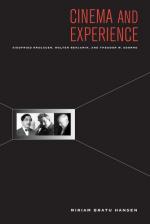|
This section contains 8,351 words (approx. 28 pages at 300 words per page) |

|
SOURCE: “On Happiness and the Damaged Life,” in On Critical Theory, edited by John O'Neill, The Seabury Press, 1976, pp. 12-33.
In the following essay, Agger explains Adorno's place in critical theory.
Critical theory chances to be either a museum-piece in the hands of its modern inheritors or a living medium of political self-expression. My argument is that critical theory can only be renewed—as Marx would have hoped—by refusing to concentrate on its philosophical inheritance and instead by writing the theory in a direct and unmediated way. The old saw that to be a Marxist is to surpass Marx is just as true for critical theory: Adorno, Horkheimer, and Marcuse blazed the trail for a theory of late capitalism, yet now they can only be suitably remembered by new formulations of theory responsive to the altered nature of the socio-cultural world.
The central motif in this task...
|
This section contains 8,351 words (approx. 28 pages at 300 words per page) |

|


